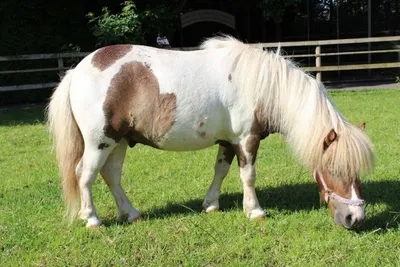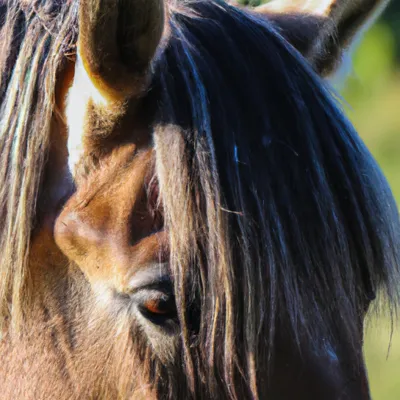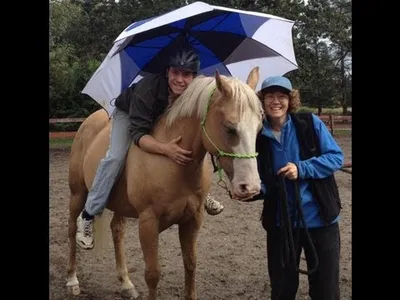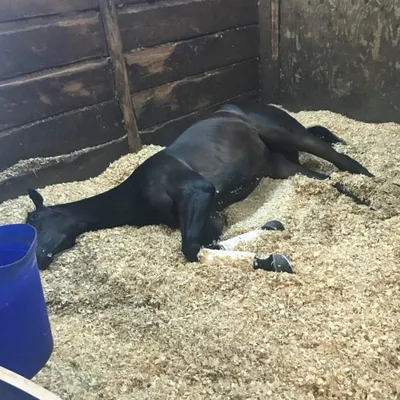From Buyer to Rider: Essential Tips for First-Time Horse Buyers
Key Points
- Determine your riding objectives and pair your expertise with the right mount to ensure a secure and enjoyable connection.
- Evaluate your financial preparedness – consider all the upfront, recurring, and incidental expenses associated with horse ownership.
- Evaluate your available time to provide daily care, training, and exercise for your horse.
- Shop around using several different venues, including online classifieds and professional contacts, to locate potential mounts and check sellers’ credibility.
- Test rides and vet checks go a long way in helping you make an informed decision.
- Close the sale with a binding contract and organize safe shipping to make the move as seamless as possible for you and your new steed.
Last update on 2025-11-11 / Affiliate links / Images from Amazon Product Advertising API
It means that you are assuming the responsibility and expense of caring for a living animal, with its daily needs and long-term obligations.
We sell horses for riding, in horseback sports, for labor, or simply as pets.
Key steps range from checking the horse’s health, breed, age, and training.
Buyers factor in expenses for feed, tack, and vet treatment.
To assist you along the way, this guide highlights what to expect and what to check before the sale.
Before the Search

Before peeking at listings or dialing, a hard reality check is key.
Too many buyers enter the search with a predetermined picture—perhaps a gaited powerhouse or a flashy show prospect—and become overwhelmed and tormented after visiting hundreds.
Taking a moment to consider your needs, experience, and resources will allow you to make a clever, sustainable decision.
Key factors to consider when defining your riding goals:
- Riding discipline (pleasure, competition, leisure)
- Frequency of riding
- Preferred horse temperament and age
- Level of training required
- Short- and long-term goals
Your Riding Reality
Fit your riding style to your horse quest.
Some purchasers have a single vision – for example, that they want a small, docile steed to accompany their trail rides – and others have a more open mind about breed or temperament.
Question yourself what type of riding you most enjoy.
Looking for a dressage, jumper, trail, or just light pleasure horse?
Think about what you’re good at.
For a novice, to mount a bucking mule or a fresh horse can be daunting and even hazardous.
A green horse is more forgiving and can teach you.
Experienced riders might seek a challenge.
Fixing specific objectives—such as riding three days a week or training for competition—will keep your quest grounded and targeted.
Your Financial Reality
- Initial purchase price: The cost of buying a horse varies widely, ranging from modest to high sums, depending on the breed, training, and age.
- Feed and bedding: Ongoing monthly costs for hay, grains, and stall materials.
- Veterinary care: Routine checkups, vaccinations, dental work, and emergency visits.
- Equipment and tack: Saddles, bridles, grooming tools, and safety gear.
- Boarding or stabling: If you do not have personal facilities, boarding fees can be significant.
- Training and lessons: Regular sessions for both horse and rider may be needed.
- Insurance: Some owners opt for health or mortality insurance for peace of mind.
Recurring expenses, such as feed and veterinary bills, need to be accounted for on a monthly basis. Gear, tack, and boarding fees accumulate quickly.
Surprise costs, such as emergency medical care or fence repairs, are standard, so a buffer is a smart move.
Horse ownership is a 15–30-year commitment, so it’s essential to have a steady and responsible budget.
Your Time Reality
Taking care of a horse is more time-consuming than you think.
Take a look at your typical day and identify where daily riding, feeding, and cleaning chores can fit in. Horses require round-the-clock care – there are no days off.
Ensure your availability for practices and workouts.
Schedule grooming, feeding, and vet checks in blocks of time. Without sufficient time, both horse and rider can become strained.
- Vitamin E for horses
- Horse immune support
- Provides skin, hair and liver support for horses
- Safe for all horses
- Get horses back to peek performance
Last update on 2025-11-11 / Affiliate links / Images from Amazon Product Advertising API
Finding Potential Horses
Discovering the perfect horse requires time, preparation, and a good sense of what works for you and your budget.
Prices have risen in recent years, so figure out early how much you can afford for both the purchase of a horse and maintenance.
Barring any physical issues, 7 – 15-year-old horses are usually a safe bet for the majority of riders.
When seeking, take multiple walks and always commit to hanging in there for two hours with any horse you’re serious about before deciding.
Reputable Sources
| Breeder Name | Specialty | Region |
|---|---|---|
| Green Pastures | Warmbloods | Europe |
| Rising Sun Farms | Quarter Horses | North America |
| Desert Trails | Arabians | Middle East |
| Highland Ponies | Ponies | UK & Ireland |
Communicate with trusted dealers.
Trusted dealers and breeders often provide pre- and post-sale support, helping new buyers steer clear of common pitfalls.
Seasoned horse owners can post their own suggestions for trusted sources.
Be sure to verify the seller’s credentials, record business history, and always require proof of documentation.
A reputable trainer has no issue providing registration papers, vet records, and references from previous clients.
Online Listings
Online horse sale sites offer an excellent platform for prospective buyers to browse and compare multiple horses simultaneously.
You can filter by breed, age, price range, and even location, making it easier to find the right horse.
Descriptive information and crisp imagery guide you in identifying suitable horses with the appropriate physique and disposition.
Search for obvious head, profile, and motion pictures.
A horse with bad conformation may not be good for all things and may be more susceptible to problems.
Lameness, particularly if observed at a trot, is a large red flag.
Always contact the seller to inquire about the horse’s background and arrange a visit.
Make sure to verify registration and health papers, ensuring you are an informed horse shopper in your horse-buying journey.
Professional Networks
Trainers and instructors can provide candid guidance on what type of horse would suit your ability and ambitions.
Most have insider knowledge about top horses before they go to the open marketplace.
Equestrian groups and forums are another method for discovering leads and receiving input on specific horses or vendors.
Horse shows and local events are prime for in-person networking and seeing horses in action.
Social media facilitates connections with buyers, sellers, and owners worldwide.
Auctions and Sales Events
Auctions provide an opportunity to view a large number of horses in a single location.
See how horses move in the ring and under saddle. Inspect the potential purchase for blemishes, previous injuries, or indications of chronic issues before bidding.
Prices might appear cheaper, but diligence is essential.
Never miss the opportunity to review records or request a vet check.
How to Evaluate a Horse

Selecting a registered horse is a deliberate and thoughtful process.
A proper evaluation goes a long way towards aligning the horse with your requirements and aspirations.
Concentrate initially on the horse’s temperament and training—both establish the base for a secure and fun relationship for potential horse owners.
1. Initial Observation
Observe the horse in its environment.
Observe its motion, position, and response to noise or unfamiliar objects.
Quiet interest is a good sign, and nervousness or aggression could indicate deeper problems.
A horse’s total health becomes evident at a glance.
Check for a glossy coat, bright eyes, and even breath. Even the stance of a horse can indicate balance.
For starters, see if the neck, shoulder, back, and hip are roughly the same length, and whether the topline (back) is shorter than the underline (belly).
These signs help detect functional soundness.
2. Ground Manners
Ground manners trump ride.
Observe it being led by the owner or trainer. Does it stand still when tied or toss its head around?
A horse that holds still and hears instructions like “walk” or “stop” is much more manageable.
See how the horse behaves while being groomed or saddled.
A trusting horse lets you handle its legs, ears, and tail without a dither.
Respect for space matters too. If it crowds or leans, this could be indicative of training deficiencies or aggressive tendencies.
A horse that listens on the ground will be safer and more fun under saddle.
3. The Test Ride
Try the horse once, and if you can, at different times.
This demonstrates how the horse acts in various situations.
Particular horses become nervous and tense as the day wears on, while others start a bit chilly but loosen up with work.
Look for balance, gaits, and responsiveness to your cues.
Make sure the stride is even and the legs come straight, not crossing or ‘rope walking.’
Take along a seasoned friend for additional input; they will likely point out details you overlook.
4. The Vet Check
A pre-purchase exam by a qualified vet is a must. Request a comprehensive exam, including flexion tests and vital signs.
Vet’s report – read it closely. Any problems discovered here can influence your choice. Even small issues can become larger ones over time.
This step safeguards both your investment and the horse’s well-being.
5. Asking Questions
Arrive armed with questions for the seller. Inquire into training, prior injuries, and temperament.
Ask for information about daily care, feed, and living space to find out what to expect.
Get clear answers to avoid surprises after purchase.
- Effective topical poultice for use on horse’s knees, tendons and ankles
- Contains natural clays, glycerine, aloe vera and key minerals
- Cooling natural clay poultice
- Use after every workout, competition or race
- Washes off easily with water – no rubbing or hand washing necessary
Last update on 2025-11-11 / Affiliate links / Images from Amazon Product Advertising API
Beyond the Horse Itself
Purchasing a horse requires more than selecting one with the appropriate appearance or ability; it also involves considering the individuals and locations involved in the horse market, along with documentation that ensures a secure and transparent transaction for prospective buyers.
The Seller
A seller’s history colors the entire purchase experience.
Check their horse market experience and ensure they have a stable history.
Request buyer references—if buyers discuss straightforward transactions, reasonable prices, and transparent conversations, that’s an excellent indication.
Find out clear information on the horse’s health, age, and training.
Sellers who skirt your inquiries or provide scant information might be concealing problems.
Trust your gut if something doesn’t feel right – countless buyers have saved themselves from heartbreak by doing so.
A good seller does wonders.
The Environment
Check out the horse’s accommodations before purchase. Look for clean stalls, ample turning room, and sturdy fencing.
Horses require cover from wind, rain, and sun, so inspect for adequate shelter and water. A beautiful location implies the horse was well taken care of.
Observe the horse’s behavior with other horses.
Quiet, social horses tend to adapt more easily to new homes.
If the barn is mucky, cramped, or noisy, the horse will catch bad habits or tension.
Swept floors, tidy feed room, and operational gates represent consistent upkeep.
Boarding at a stable is pricier than housing the horse at home, but it provides peace of mind.
With folks always on hand to spot health issues or emergencies, it’s an excellent option for busy owners or those new to the industry.
The Paperwork
Verify that the horse is registered and that there is clear ownership before exchanging funds.
Certain breeds have rigid transfer guidelines, and lost documentation can lead to legal wrangles.
They should also outline vaccinations, deworming, and recent Coggins test results.
Always hold on to copies of everything — sales contract, health papers, proof of payment.
These documents are helpful if issues arise in the future regarding the horse’s history or your ownership rights.
Key Considerations
It’s more than the sale price of the registered horse. Just the feeding can run $30 to $200 a month.
It takes patience and time for horse owners to adjust to a new horse.
Align your objectives and talent to the horse’s capabilities for an ideal horse match.
The Hidden Costs
There’s more to owning a registered horse than just the purchase price. It entails a tangle of initial and continuing fees that can surprise even informed horse shoppers.
Understanding these hidden costs is crucial for making a wise and sustainable choice.
Initial Outlay
Bringing a horse home begins with more than the purchase price.
Many people waste additional money on travel to try riding horses, sometimes over $1,300, just to try a few.
Tack and gear—saddles, bridles, blankets, grooming tools—can drive up first costs.
For instance, decent tack and supplies can easily cost a few thousand, depending on quality and horse requirements.
If you purchase out of state or region, tack on fees for brand inspections and ownership paperwork.
Even transporting the horse can be expensive, particularly in winter or during peak seasons, when haulers charge higher rates due to weather risks.
Some owners require secure renovations or fence enhancements before horse arrival, which contributes to the budget.
Mapping out these costs with a comprehensive checklist helps you keep track of what you’ll need immediately.
Monthly Upkeep
Monthly care for a healthy horse can be a constant sucker punch to any horse budget.
It begins with feed—hay, grain, and supplements—which can vary with the seasons or region.
Regular services, such as deworming and vaccines, accumulate, especially for experienced horse owners who understand the importance of maintaining their horse’s health.
Veterinary care is not just an annual bill; check-ups, vaccinations, and dental work are ongoing requirements.
Farrier visits for hoof trimming/shoeing are often every couple of weeks.
Horses also need pest control, particularly in warmer months, to control flies and ticks.
Insurance is an additional monthly or annual expense, with some horse owners incurring costs of more than $1,100 per year for protection.
If you need training or riding lessons, this can be a significant recurring cost in the horse-buying journey.
Emergency Funds
An additional emergency fund is crucial.
Horses can get sick or injured with little to no warning, and emergency vet visits can run into hundreds or even thousands of dollars.
Accidents—such as colic, lameness, or injuries—often require immediate, costly treatment.
There’s no better feeling than knowing you have a certain amount stashed away and that surprises don’t have to blow up your budget.
A nice habit is to check in on your budget every few months.
This helps identify gaps in your emergency savings and adjust them as your horse’s needs evolve.
- HOOF HEALTH: Helps maintain healthy hoof growth
- HOOF QUALITY: Supports strong hoof walls
- KEY INGREDIENT: Contains biotin, which plays an important role in the metabolism of carbohydrates, fats, and proteins
- IDEAL USAGE: Perfect for all horses, including pregnant mares
- PALATABLE: Easy-to-feed larger crumble for less sorting
Last update on 2025-11-11 / Affiliate links / Images from Amazon Product Advertising API
Finalizing Your Purchase
Every piece — from price negotiations to that safe trip home — influences your triumph and your horse’s health.
Minor decisions at this point will help you evade typical snafus and establish a clean launch in your horse-buying journey.
Price Negotiation
Begin with reality.
Ensure you research the seller’s reputation and references before proceeding.
Leverage the horse’s training history, vet records, and your own rides in support of your offer.
Negotiating isn’t about winning; it’s about finding reasonable common ground.
If the seller requests more than you feel is appropriate, use your notes—such as a recent vet check or market rates for comparable horses—to justify your position.
Once in a while, buyers want to ‘try’ the horse and ask to take it home for a month on a down payment.
This allows you more time to determine if the horse suits your requirements.
Be prepared to walk, should the numbers not work.
A 24-hour pause after you visit the horse allows you to balance all the facts before you commit.
Purchase Contract
Written contracts are essential.
They should include the agreed-upon price, payment milestones, and any important details, such as a sale contingent on the seller providing all necessary paperwork, including registration and veterinary history.
In certain locations, they might have regulations that demand a negative Coggins Test or other disease inspections before purchase.
Have both you and the seller sign the contract. Retain a copy for your records.
These specifics shield both parties and define explicit conditions should any conflict arise down the road.
Arranging Transport
Once the deal is done, strategize how you’ll relocate your horse.
Choose a transportation company that understands horses and has excellent references.
Agree on the schedule in advance and discuss final logistics to avoid any surprises.
Prepare your barn before the horse. Don’t forget, fresh hay, water, and a clean stall are waiting.
If you’re unfamiliar with this process, seek assistance from a professional or reliable pal.
A second opinion pays close attention and can catch things you might gloss over.
Our Conclusion
Buying a horse requires time, caution, and a serious evaluation of what suits your lifestyle. Every step counts.
A horse is more than a pet; it’s a full manifestation of your lifestyle. Think about what you’ll spend on feed, vet care, and gear.
Experience the horse in real situations.
See how the horse behaves, eats, and moves, not just how it appears. Demand clean papers and complete health checks.
Trust your eyes, not just your ears.
To seek out the perfect equine, keep your wits about you and inquire.
Post your own advice or about your horse hunt.
Your wisdom guides those who are just beginning this journey with open eyes and a solid strategy.
- 3-IN-1 SUPPLEMENT: Combines the 3 most popular supplements in one bucket!
- JOINT HEALTH: Supports normal joint function, healthy cartilage, and collagen synthesis
- HOOF HEALTH: Supports strong hooves and healthy hoof growth with 16 mg. of biotin per 2 oz. serving
- HEALTHY SKIN & COAT: Helps maintain healthy skin and a lustrous coat
- PROVEN INGREDIENTS: Combines glucosamine, chondroitin sulfate, vitamin C, manganese and MSM for joints; biotin, methionine, lysine, and zinc for hooves; omega 3 & 6 fatty acids for skin & coat.
Last update on 2025-11-11 / Affiliate links / Images from Amazon Product Advertising API
Frequently Asked Questions
What should I consider before searching for a horse?
Determine your primary purpose in purchasing a horse, your ability to ride, and your budget. These factors will help you become an informed horse shopper and make wiser decisions.
How can I find horses for sale?
Shop for registered horses from reputable breeders, trainers, or the eHorses horse market online platforms. Ensure you review the seller’s reputation and request references for a safe transaction.
What is the best way to evaluate a horse before buying?
Schedule an in-person visit to see the registered horse’s condition, disposition, and training. Bring a trusted trainer or veterinarian for a pre-purchase exam.
Are there costs beyond the horse’s price?
Yes. Recurring costs like feed, stable, vet care, and equipment for a healthy horse add up every month, so budget wisely.
Why is a pre-purchase exam important?
A pre-purchase exam by your vet ensures that the registered horse has no soundness or health issues, protecting you from unexpected vet bills and confirming the horse is suitable for your discipline.
How do I finalize the purchase of a horse?
When you’re happy with your purchase from the horse market, fill out a written sales contract with terms spelled out for the safe transport of your new registered horse.
Can I return a horse if it doesn’t meet my needs?
Returns are seller-dependent, so discussing this with a reputable seller before purchasing is crucial to avoid confusion.












